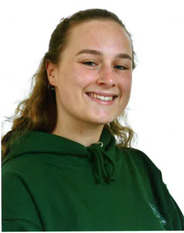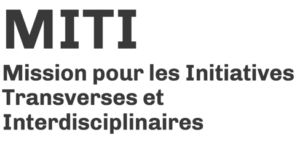Cell Biology of Archaea
Our group is interested in the archaea Thermococcales whose natural habitat is the oceanic hydrothermal vents, one of the harshest environments on Earth, where living organisms are exposed to very high temperatures, hydrostatic pressure and toxic metals. Thermococcales are able to multiply at an astonishing rate in this polyextreme environment and this remarkable adaptation and its underpinning molecular mechanisms is the main focus of our work. Our laboratories are equipped with all the latest technologies and equipment adapted to the culture of these extremophilic microorganisms and their genetic manipulations. Our team has a long-standing experience in molecular genetics, protein biochemistry, functional genomics and bioinformatics of Thermococcales. Using this broad range of approaches, our research currently focuses on the chromosomal DNA topology of Thermococcales and its functional importance including the function and evolution of DNA topoisomerases, the synthetic biology approach to reconstruct the ancestral cell biology of archaea, the plasticity of the genome of Thermococcales, and the relations of these archaea with the mineral world.
1. Chromosomal DNA topology and its function in Thermococcales archaea
DNA is a long polymer that has to be folded and condensed to fit within the cells and this is achieved by a number of proteins that bind DNA and modify its topology locally. We are particularly interested in DNA topoisomerases, ubiquitous enzymes that can change the topology of DNA by cutting transiently DNA. This activity is essential for all DNA-templated processes including transcription, DNA replication and repair. Using Thermococcales archaea as models, our aim is to understand the role of DNA topoisomerases and of DNA supercoiling for genome function, structure and stability at high temperature. To this end we use molecular genetics and biochemistry as well as NGS-supported functional genomics approaches to study DNA topoisomerases and chromosomal DNA topology in hyperthermophiles. We are currently investigating (i) the function of reverse gyrase, a topoisomerase that is specific for hyperthermophiles; (ii) the evolution of topoisomerase VI and its relevance for the emergence of Eukaryotes; (iii) molecular mechanisms that protect genomic DNA from degradation when T. kodakarensis is exposed to extreme heat stress.
2. Plasticity and evolution of the Thermococcal genome
The Thermococcales archaea have relatively small genomes (~2Mb) which corresponds to half the genome of the model bacterium Escherichia coli. Our work has led us to sequence a large number of species and we now have more than 100 fully sequenced and annotated genomes. These circular genomes show a very high plasticity even if the essential genes are always located at a constant distance from the single origin of replication. We observed that these genomes evolve rapidly, even under laboratory conditions, through a particular recombination mechanism associated with the presence of mobile genetic elements. Our results have demonstrated that a particular class of integrases is able to generate homologous recombination events on these genomes. We are currently characterizing biochemically this new genomic recombination process. Following this discovery, we are interested in the properties, distribution and classification of archaeal integrases. This work contributes to decipher the molecular mechanisms of genome evolution in all living beings.
3. Reconstructing the cell biology of the archaeal ancestor of eukaryotes
A large body of evidence indicates that informational genes as well as cytoskeleton and membrane remodeling/cell division machineries of eukaryotes have been inherited from an archaeal ancestor. These eukaryotic-like proteins are scattered across different lineages of the TACK (Thaumarchaeota–Aigarchaeota–Crenarchaeota–Korarchaeota) superphylum, whereas in Asgard archaea most of them are gathered within the same organism, suggesting that a member of the Asgard lineage was the archaeal ancestor of eukaryotes. We hypothesize that eukaryotic-like gene suite of Asgard archaea has evolved by a step-wise horizontal gene acquisition and gradual coalescence of different cell biology features within the ancestor of Asgard archaea. The aim of the ARCHANE project is to test this hypothesis through 3 dedicated work-packages (WPs) designed for computational and experimental reconstruction of the eukaryotic-like phenotype in genetically tractable archaeal models (Sulfolobales and Thermococcales). Our ultimate objective is to shed light on the evolution of cell biology in archaea and the emergence of the archaeal ancestor of eukaryotes.
4. Biomineralization of Thermococcales
Abundantly found within hydrothermal vents called “black smokers”, Thermococcales interact with this extreme environment, characterized by strong physicochemical gradients and mainly composed of iron sulfide minerals such as pyrite (FeS2). While pyrite is formed abiotically inside the chimneys at high temperatures (> 250°C), a large stock of FeS2 is also produced at lower temperatures (< 150°C) by a still unknown mechanism. We have recently shown, that Thermococcales are able to rapidly produce abundant amounts of iron sulfides such as pyrite and greigite (Fe3S4). The sulfur vesicles produced by Thermococcales during cell growth seem to be strongly involved in the biomineralization process and thus in the nature of the bio-minerals formed. This newly discovered biomineralization mechanism could be a strategy set up by Thermococcales to survive/adapt in their highly mineralizing extreme environment. In the laboratory, we are studying the physicochemical parameters and molecular mechanisms that influence the formation and nature of iron sulfide minerals produced by Thermococcales in order to better understand the role of Thermococcales in the biogeochemical cycles of iron and sulfur and thus allow the identification of new biosignatures of hyperthermophilic archaea within hydrothermal samples.
5. Bioinformatics of prokaryotic genomes
For several years we have been developing software in the form of web services for the manipulation and analysis of genomic sequences of the 50000 prokaryotic chromosomes completely sequenced, maintained locally and updated daily. The BAGET service allows to easily obtain the sequence and the immediate environment of any gene from these organisms. FITBAR allows the prediction of regulons, at the scale of a complete genome, based on specific sites provided by the user. SYNTTAX allows synteny analysis based on the taxonomic classification of different species. WASPS provides a fully resolved synteny approach for all known plasmids including user supplied sequences.
team

Group Leader Lecturer
Lecturer
Emeritus Professor

Lecturer

Emeritus Researcher
Engineer
Engineer

Engineer assistant

Engineer assistant

Engineer

Bachelor Student

PhD student
Master Student
Master Student
Bachelor Student
Latest publications
For all the publications of the Team click on the button below.
External funding







